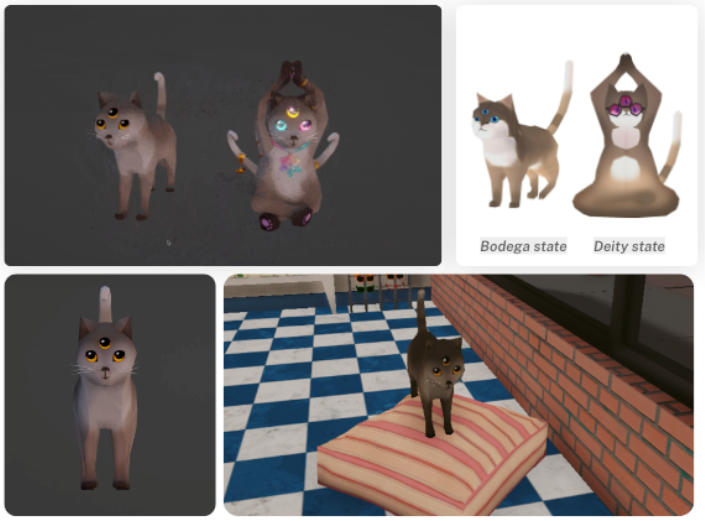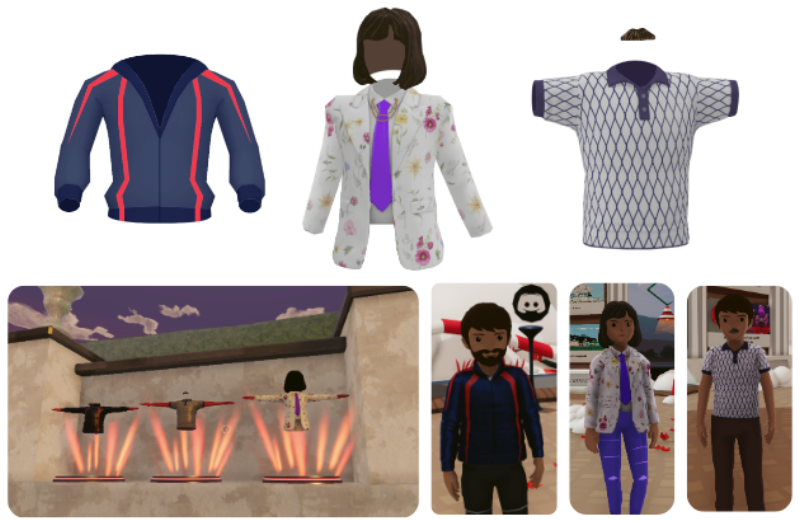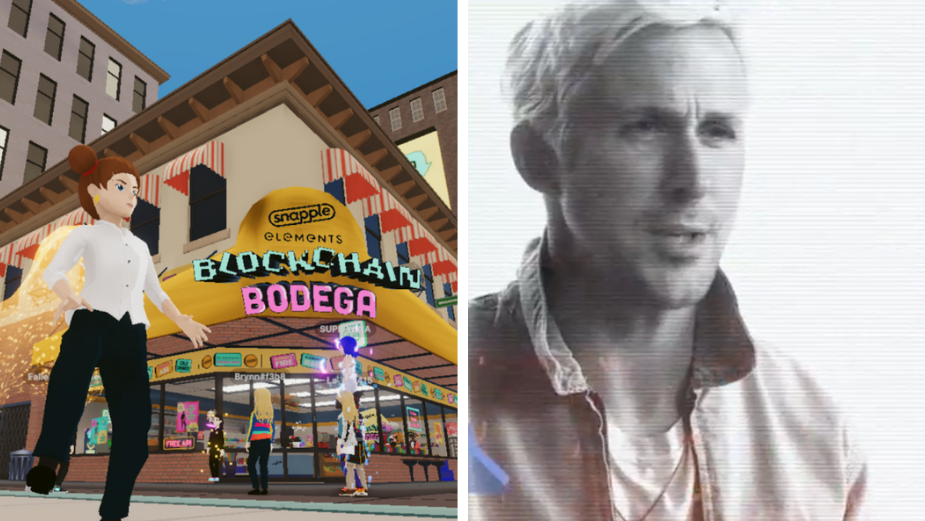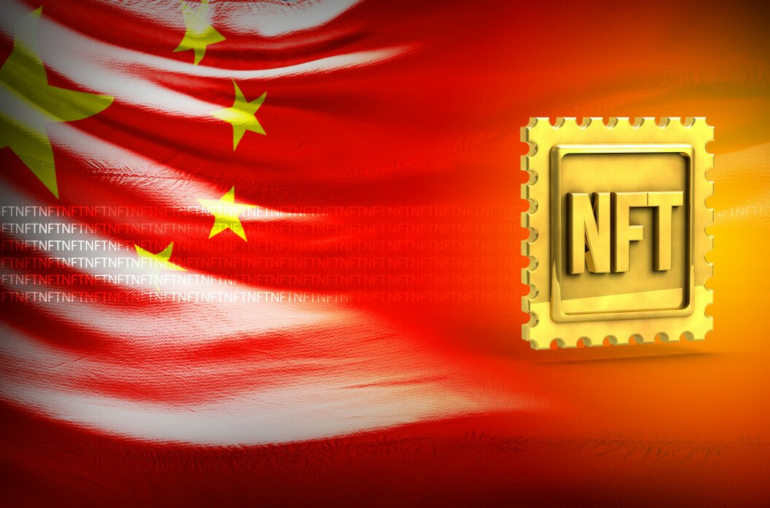SHARE
What is the metaverse? If you can answer that in a single sentence, congratulations. Potentially the most-hyped topic in the industry over the past two years, the metaverse has dominated discussions and polarised people in equal measure – all without yet establishing itself as a fully-formed creative medium. If there’s one thing on which the metaverse’s advocates and sceptics can agree, however, it’s that the technology itself is still in an evolutionary stage.
During this period of experimentation, there’s a high value on campaigns or activations which in some way show the potential – however distant or immediate – of the metaverse. Happily for The Electric Factory, the creative innovation company based out of Uruguay, the US, Mexico and Puerto Rico, that’s precisely what they were able to do with two equally inventive campaigns for their clients Netflix and Snapple.
For Snapple, audiences were given the elusive opportunity to achieve ‘Snaplightenment’ through a bombastically creative digital rendition of a New York City bodega. But when we say this was unlike any bodega you’ve seen before or will again, we mean it.
For Netflix, on the other hand, The Electric Factory were enlisted to help create an immersive experience in support of The Gray Man – a Russo brothers thriller starring Ryan Gosling, Ana de Armas, and Chris Evans. The result was a maze with participants must navigate – finding shortcuts and secret rooms along the way – to reach the centre featuring a wearable NFT based on a character from the movie.
In order to figure out how these ambitious projects came together – and what they might tell us about the metaverse’s creative potential – LBB’s Adam Bennett sat down with Danny Paul, ECD at The Electric Factory.
Danny> The initial briefs were very different on these two projects.
For Snapple, we completely re-briefed the brief. The original task was simply to create a franchise model for bodegas in Decentraland. It was interesting, but we realised that this didn’t focus on users, and creating a meaningful experience. It was too centred on landowners and virtual real estate. With this new direction, we crafted a truly immersive storyline full of mysticism and discovery. Our users set out on a quest to discover the secrets of the bodega, progressing to achieve ‘Snaplightenment’ through deep engagement with the Snapple Elements of Air, Fire, and Rain.
For Netflix, it was all about bringing the details of “The Gray Man” to life. It was very important for us to stay true to the aesthetic of the film, right down to the gravel on the maze floor, the plants in the planters, and of course Chris Evans’ ‘trash stache! But what changed as we progressed was the level of emergent gameplay within the maze itself. We designed an experience that allowed fans to discover their own paths through the maze – even though I helped design the maze, within a day superfans had knocked me well off the leaderboard! Pair that with Ryan Gosling’s video intro, the original soundtrack integration, and the castle command room overlooking the maze, and we feel like we ended up capturing even more of the film than we had originally set out to do.
Danny> It all started with the cat. We all fell in love with the idea of this bodega cat embodying the transformation from the “real” store to the mystical elements world hidden in the back room. We started to picture this cat walking around the ubiquitous checker patterned floor, leaning against a broken ATM, playing with non-packaged batteries, vandalising local posters layered over other posters, and all the little touches that create the lovable chaos of a NYC bodega.
Then we got to transform it all into a mystical version of itself right down to our employee “Des” becoming “Destiny”, and of course the cat turning into a levitating all-knowing feline with the deepest New York accent we could find. Even outside the bodega we wanted to capture that feeling you have in the city, where a drop of water reminds you that at any moment one of those window air conditioners just might fall on your head.
Above: All angles of the mystical Bodega Cat.
Danny> A bodega is a place of discovery; you never quite know what you’re going to find on those overcrowded shelves. We took that to heart as we built the Blockchain Bodega in Decentraland, because simply re-creating a physical structure in the metaverse doesn’t take advantage of the infinite possibilities on offer.
When we do these projects, we like to think about why this space should exist in the metaverse; what makes it special? It helps to begin with something familiar, something that evokes a feeling, but then we elaborate, looking to capture its essence in the fantastical physics-breaking world of pixels. 
Above: Inside the Blockchain Bodega.
Danny> The metaverse is quickly becoming a new and more expansive way to engage with the world, and with it comes the promise of persistent digital identity and ownership. Whether digital or physical, we express our personalities through the clothes we wear, the art we hang in our homes, and our outward appearances.
NFTs enable this digital ownership and the possibilities for self expression in this digital world that we are calling “the metaverse.” I want my avatar to express my identity through wearables and tattoos and hairstyles (which can also be wearables). I find value in the limited edition digital art that I own.
For these campaigns, the NFT rewards are both a tool for expression and an intrinsically valuable artefact of the moment. Once minted, NFTs can never exceed the specified number. So you were either able to get one or not. What right now is a bit of FOMO for the cool new style will one day be a building block for our digital identities based on a fundamental understanding of who we are.
Above: A selection of wearable rewards from ‘The Gray Man’s metaverse maze in Decentraland.
Danny> Oh, lots! We’re avid gamers on consoles, PCs, and mobile devices. I am personally obsessed with open world games such as Breath of the Wild and Elden Ring, and while accessible computing power limits the level of detail we can express in the current metaverse (we don’t want to crash everyone’s computers), we take inspiration from the depth of storytelling and visual detail that those games espouse. The key word for us is “immersive.” For a metaverse experience to truly feel immersive, it is precisely those little touches that not only pull you in, but also keep you there.
Also, it is worth mentioning that environmental storytelling is not just about the visuals, but also about the audio. To enrich the scene, we have ambient street sounds, spatial audio to draw you to different areas in the experience, and carefully selected music tracks that help establish the mood. The bodega has a fun bossa nova track playing over the loudspeakers, while “The Gray Man” has intense orchestral music paired with gunfire and helicopters.
Danny> Ok, if I haven’t gotten geeky enough yet, I’m about to. Decentraland is an interesting space because it is truly a DAO (decentralised autonomous organisation) and utilises the on-chain aspects of web3.0 and cryptocurrency. This is not to say that it is better or worse than platforms such as Roblox or Fortnite, but rather that it participates in the forward-reaching aspect of what the metaverse will be. We felt that this paired well with the strategic goals of these two experiences.
Danny> Yes and no, which is to say it depends on the audience. The metaverse is quickly becoming a new and more expansive way for us to engage with the world. With that said, it is not one thing as much as it is an ever-shifting landscape of immersive technologies that we access through multiple platforms and channels. Immersive gamification represents an enormous opportunity for active audience engagement with a campaign. But we still have to ask ourselves the fundamental questions we have always asked. Who is our audience? Does this mode of engagement make sense for them?
Sometimes audiences really want to actively engage, as was the case with these two campaigns. In other cases, they may want a more passive engagement, and that is possible in the metaverse as well. Imagine buying a shoe that automatically came with an NFT drop of the same style only digital? I would go for it, and I don’t have to do anything other than claim it. We are lucky enough to be creating the metaverse itself, as we create within it. We are both discovering and defining what experiences have meaning to us as human beings living in both the physical and digital worlds.
Danny> As a creative innovation company, we’re familiar with the challenges of working in unfamiliar spaces with new technologies. The metaverse itself has not yet been clearly defined and the rules of engagement have yet to be written. This presents a real challenge in terms of communication and expectations.
Yes, the metaverse presents a world of possibilities, but what is often misunderstood is that those possibilities and expectations need to be informed by a technical understanding of the specific technology and platform we are using, in this case Decentraland, and the users within that space. Not everyone is going to embrace the metaverse in all its potential manifestations and the “If you build it, they will come” mentality is always in danger of leading the best-wrought concepts astray.
Oddly enough, the challenge is making sure to communicate both internally and externally that the metaverse is not just a space, but a destination, and the way you get there is often just as important as where you end up. The workflow for these builds is something entirely new and we strive to use a clearly defined process to bring order to chaos, process to possibility, and vision to reality.
Danny> There is always an opportunity to learn and grow from our work. If I could go back in time to the start of the project I would find a different version of “the metaverse” than already exists today. Accepting that, I would take the areas where we extended the metaverse into the real world and build even more of that bridge between the digital and the physical.
The more that metaverse experiences can become part of our physical life rather than a place we go to escape from it, the stronger the efficacy of the work and the more we will have done to nurture this digital fledgling into what it can be, which is nothing less than the future of computing and a redefinition of what it means to be human.
Genres: Visual VFX, Metaverse
Categories: Online, Media and Entertainment
Wed, 26 Oct 2022 07:22:00 GMT
v8.4.3


